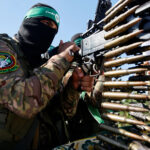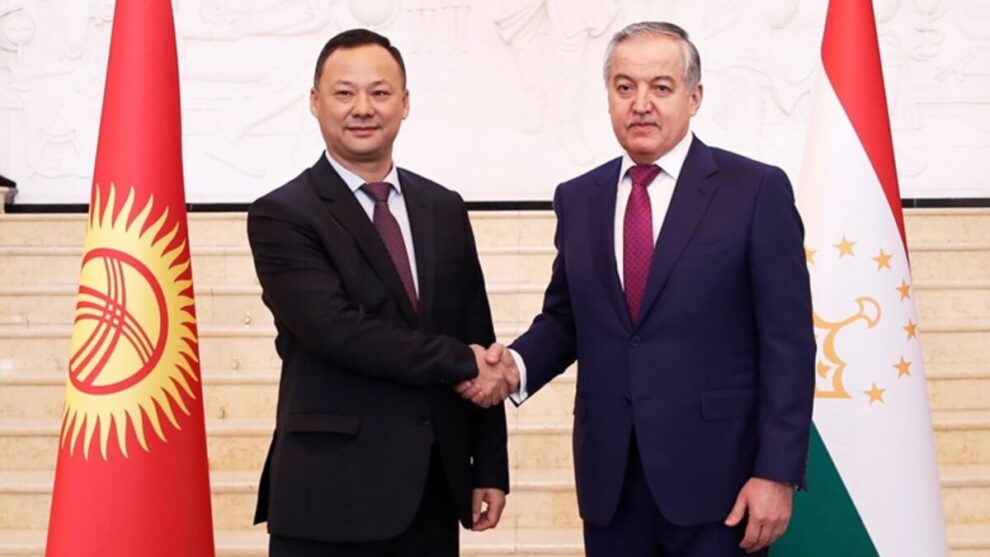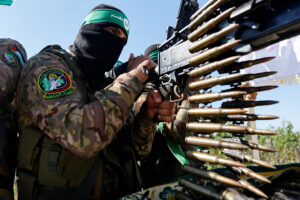Tajikistan and Kyrgyzstan, in the matter of clarifying the border line between the countries, have reached the level of a diplomatic solution to the problem.
The head of the Cabinet of Ministers, Akylbek Japarov, said this at a meeting of the Jokorgu Kenesh.
“The process of delimitation of the Kyrgyz-Uzbek state border has been completed, and the clarification of the Kyrgyz-Tajik state border has moved on to the path of diplomacy between the two countries,” TASS reports, citing a message from the press service of the Kyrgyz government.
What this specifically means is not stated in the material.
Japarov also noted the strengthening of the material and technical base of the republic’s security and law enforcement agencies.
“Over two years, more than 20 billion soms (about $224 million) have been allocated for the border service; weapons, drones, and heavy armored vehicles have been purchased,” the press service quotes the prime minister.
According to him, Kyrgyzstan has acquired an anti-aircraft missile system for the first time in recent years; currently, the country has 10 helicopters and 1 aircraft in combat readiness, which will “provide air defense.”
It is noted that at present Kyrgyzstan has not completed the procedure for delimitation and demarcation of the common section of the border only with Tajikistan. With China, Kazakhstan and Uzbekistan this process has been completed.
Earlier at the “Poverty and Inequality” forum, Akylbek Japarov said that Kyrgyzstan and Tajikistan plan to resolve border issues before the new year.
“We are working on the assignments of the presidents of Kyrgyzstan and Tajikistan, so that before the new year we can report that border issues have been resolved,” Japarov said.
In November 2022, the President of Kyrgyzstan Sadyr Japarov made a similar statement, but the parties did not manage to complete everything on time.
In 2023, especially in recent months, the bilateral commission on delimitation and demarcation of the border between Tajikistan and Kyrgyzstan has intensified its work and working groups are constantly meeting. Only in October the parties announced the agreement on 57 kilometers of the state border.
At a meeting of topographic working groups of government delegations of the two countries on October 3-7 in Batken, the parties agreed on 43.32 km of the Tajik-Kyrgyz state border. At the meeting on October 12-18 in the city of Buston, Sughd region of Tajikistan, another 13.98 km of the state border.
In addition, since the beginning of October, two meetings of the intergovernmental commission of Tajikistan and Kyrgyzstan on the delimitation and demarcation of the state border, headed by the chairmen of the State Committee for National Security of Tajikistan Saimumin Yatimov and the chairmen of Kyrgyzstan Kymchibek Tashiev, have been held.
The first took place on October 2, as a result of which the mysterious Protocol No. 44 was signed. The parties stated that they had reached agreements in principle on the border and the document provides the basis for resolving all border issues.
The second meeting was held on October 16, at which the need to strengthen friendship, mutual understanding and trust between the border regions, as well as to actively continue cooperation between the border regions and regions of the two states was especially noted.
The total length of the border between the two republics is approximately 980 km. Currently, more than two-thirds of the border line have been identified and mutually recognized, the remaining sections – more than 400 km – are considered controversial.
Negotiations on delimitation have been ongoing since December 2002. But the failure to resolve this issue has repeatedly become the cause of conflicts involving local residents and military personnel of the two republics, including with the use of firearms.
Due to the uncertainty of borders between residents and border guards of neighboring states, clashes often occurred that escalated into armed conflicts.
Source: Asia Plus TJ















